Animal Behaviour Essentials Part II: The Tail
- March 16th 2021
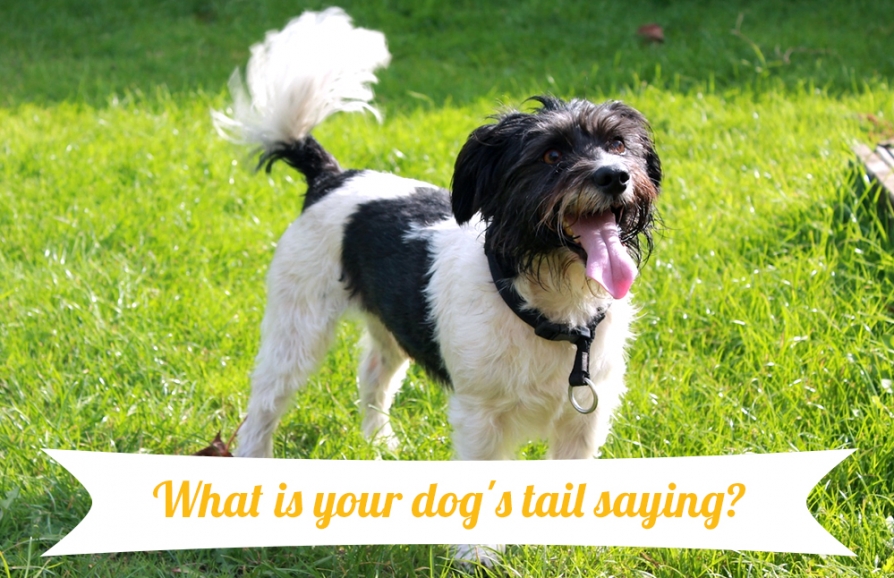
Welcome to our second part of Animal Behaviour Essentials! In Part I, we talked a bit about dog vocal sounds, where we covered what your dog is telling you based on the sounds they make. We also pointed out that guessing what those sounds mean is pretty instinctive, so don’t worry if you are new to being a pet parent. You’ve got this!
But dogs don’t
only communicate with sound. They use their whole body to tell you what they are
thinking. In fact, dog sounds are usually interpreted in tandem with canine
body language: a dog who is barking with stressed body language is telling you
something different from a dog who is barking while wagging their tail and
wriggling their bum excitedly.
In this blog,
we’ll explore the number one misunderstood indicator of dog body language: the
tail.
Understanding
the Tail
A dog’s tail is a
great window into how they’re feeling at any given point in time. We humans
don’t have tails, so it is easy for us to ignore how crucial a symbol of body
language this can be. But just as a person hunches their shoulders to make
themselves smaller or throws out their chest to take up more space and project
confidence, a dog uses their tail to indicate what’s going on in their heads.
The tail can tell you a lot about what a dog is feeling.
Right now, tail
body language has been distilled down to a commonly accepted nugget: if a dog
is wagging their tail, they’re happy to see you. If a tail is being wagged,
that’s one friendly dog.
True… But also not
true.
Let’s dive into
what a tail wag could really mean, and the other ways in which reading a dog’s
tail helps you understand them.
The Wag
It is true that
dogs wag their tail when they’re happy to see you. You will have noticed it
when your pet comes to greet you: their tail is moving in happy circles and
they look delighted that you have managed to stay alive. But you will also
notice that it isn’t
just the tail that’s wagging. What you have here is
a loose dog. Their bum moves slightly, their whole body seems languid and they
are generally relaxed. This
is a happy dog.
But a dog is not
always happy when they’re wagging their tails. You will have noticed this in
friend’s dogs that you greet or in strays. Their tails are
wagging, but
the rest of their body is not. And the wag seems swift and sudden, like it is
running on a upbeat tempo. This is a dog that is overly excited, and that isn’t
necessarily because they’re happy to see you. Sometimes it just means they are
high-strung. If you don’t know the dog and they seem high-strung when you meet
them, it is generally better to wait for them to calm down before interacting
with them. In an overly excitable state, anything can get them to snap and they
may lash out.
And then, of
course, there is the contemplative wag. This is a slow wag, lazy almost, but
mostly it is a thoughtful wag. The dog doesn’t quite know what to make of you
as yet, and they’re willing to amble over and sniff you a bit more to see if
they like what they smell. This doesn’t mean they love you or even that they are
friendly towards you. But it doesn’t indicate hostility either. It just means
exactly what it means—they are undecided and are doing some thinking. It could
also indicate insecurity, so be a bit cautious around the darling.
Tail positions
Tail positions can
tell you a lot about what a dog is thinking, and how you should respond to
them. But before we dive into the nitty-gritties of what the different tail
positions can mean, we want to lead with several disclaimers. First, remember
that the tail naturally rests in different positions for different dogs
depending on their breed. Some dogs have long, fluffy tails that generally hang
loose, while other have short and stiff tails that are more alert. Each of the
positions described below will depend on your dog breed and how they use their
tail.
Second, remember
dogs are individuals. How each dog uses their tail is different—just like
people smile for different reasons or have different verbal ticks. The broad
strokes of what we have mentioned below apply for all dogs, but your dog may
have a unique way to express their emotions and you’ll learn those ways in the
more time you spend with them. Our friend has a Labrador, for instance, who
wags her whole bum when she’s excited to see you—just an adorable little bum
dance. That’s how you know she
really cares. So always approach each dog
as an individual, and look for ways to understand them in the context of their
breed, personality and situation.
And lastly, dog
and human communication isn’t an exact science. We’re learning all the time how
complex our beloved companions are, and how to interpret and understand what
they mean. Always brush up on your knowledge to make sure you stay as current
as possible.
Tail position:
Stiff and pointed up
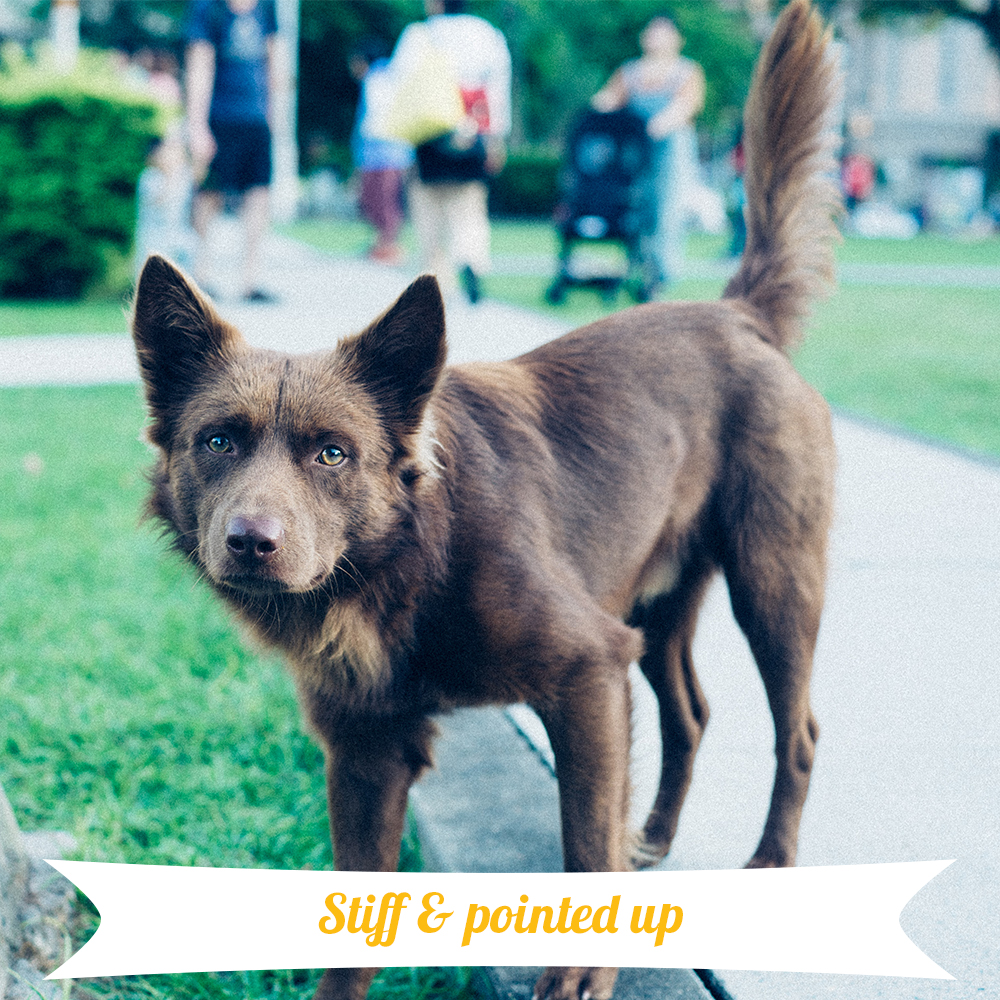
If a dog’s tail is
stiff and pointed upwards, then this means the dog is unhappy. A stiff tail
that is pointed straight up is a sign of anger and aggression, and it means the
dog is close to snapping. If this is a dog you don’t know, give them space
until they figure out their equation. Don’t interact with them. If it is your
dog, then you may need to leash them to stop them reacting to whatever is
upsetting them.
Tail position:
Up, but not stiff and straight
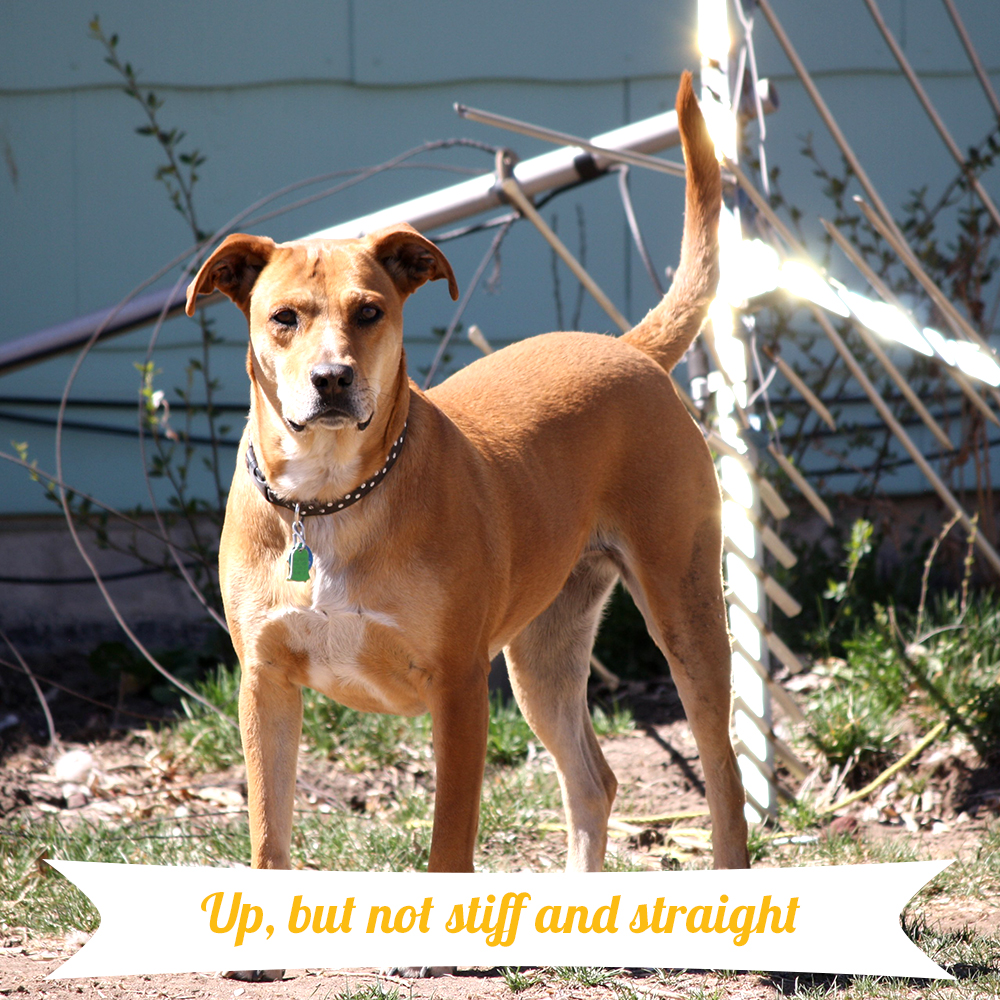
If your dog’s tail
is just generally perky and raised, then this doesn’t mean they are upset or
angry. It just means they’re feeling confident—just like a person strutting
into a room on a good day. Confident is good, so a perked up tail should make
you happy. Remember though that a raised tail can also mean alpha dog
behaviours, so your dog may try and dominate over you. If you see a raised tail
among a pack of stray dogs, then that just indicates to you who is leading the
pack.
Tail position:
Stiff and horizontal to the ground
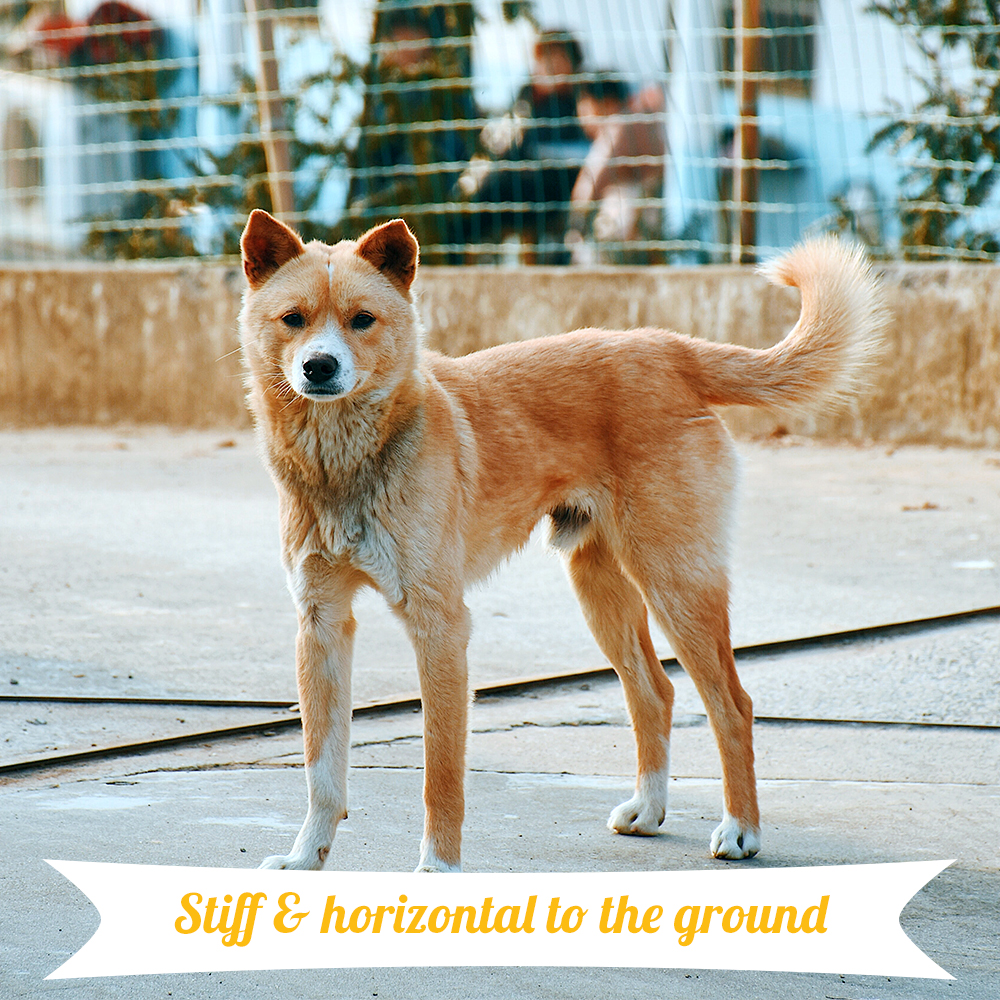
When a dog’s tail
is stiff and pointed horizontal to the ground, then the dog is in a curious
mood. This isn’t the same as the contemplative wag. In the contemplative wag,
the dog doesn’t know what to make of you as yet. They’re up for exploring, but
they’re also generally hesitant about what could go down. A dog with a stiff
tail that is horizontal to the ground is feeling
neutral, and well up
for exploring.
A good way to
imagine it is this: think of a person coming up to a café counter, shuffling on
both feet, hmm-ing and haw-ing, unsure of what they want. That’s a
contemplative wag. Compare that to a person who strides up, tries all fifteen
of the coffee samples laid out and then makes a decision, boom!, on what they
think of the fifteen samples and what they want. That’s a tail pointed
horizontal to the ground. In this position, your dog is an explorer and they’re
not afraid of anything.
Tail position:
Lowered or between the legs
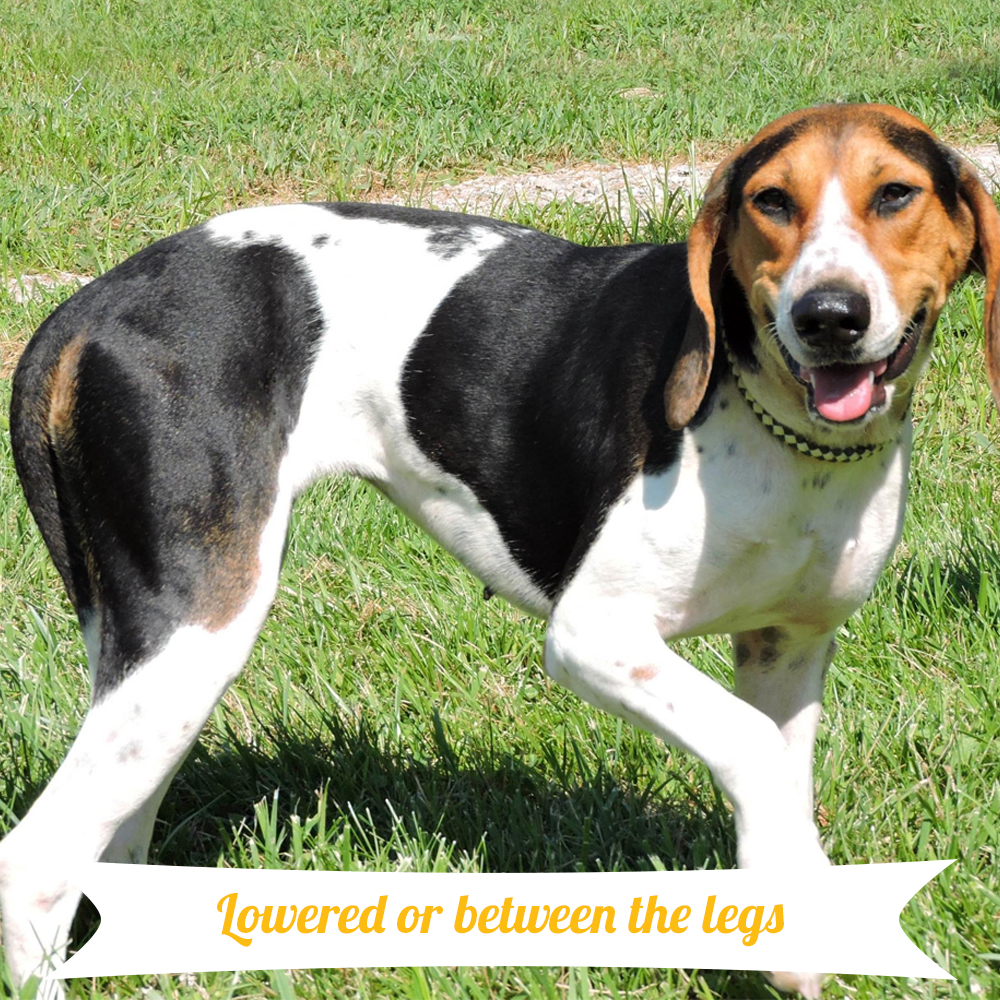
If a dog has their
tail between their legs, then they are scared and they are trying to make
themselves as small as possible to escape notice. This is especially true if
the tail is completely tucked between their legs and is hiding the anus.
If the dog has
their tail lowered, then it means they are anxious and nervous, but not
entirely fearful. A dog may wag their tail a little in this position. This
indicates that they’re trying to appease you and make friends. This is sort of
like offering chocolate to the really scary, big guy on the playground when you
are not sure if you are going to be friends or enemies.
Research on how
dogs use their tails is evolving all the time. New research suggests, for
instance, that the
side to which the dog wags their tail means different
things. A tail wag to the right means they’re happy, while a tail wag to the
left means they are frightened. Strange? Not exactly… there is science to back
it up. The left side of the brain controls feelings such as serenity and love,
and so when the left side of the brain is engaged—i.e. your dog is feeling
happy—they wag their tail to the right. The right side of the brain deals with
negative emotions such as fear and fleeing, so when the right side of the brain
is engaged—i.e. your dog feels they’re in a dangerous situation—they wag their
tail to the right.
Understanding how
your dog uses their tail and what it can tell you is a crucial aspect of
knowing your dog better. But your dog’s body language isn’t just restricted to
their tail—it includes their eyes, mouth, and ears. Want to know more? We’ll
dig into it in Part III of Animal Behaviour Essentials!
Comments
No posts found
